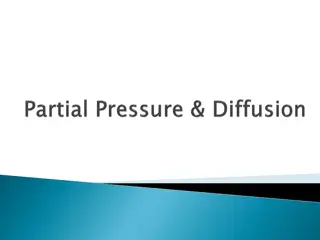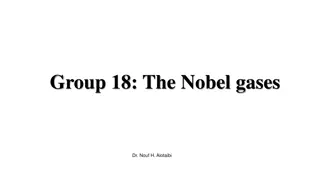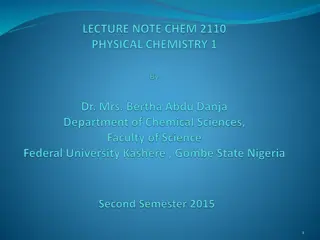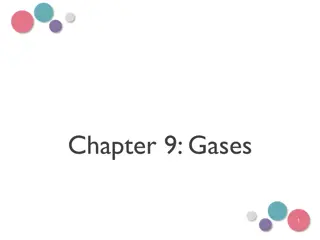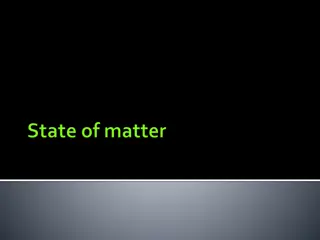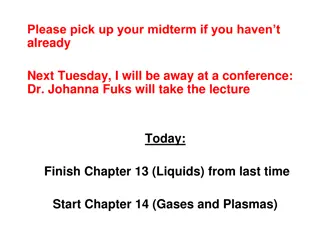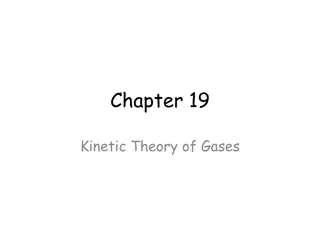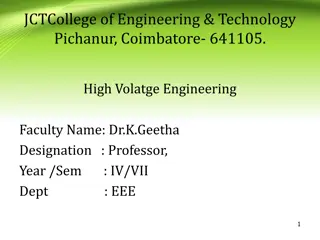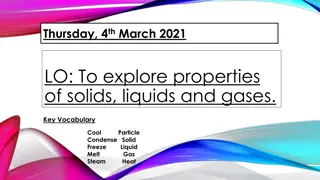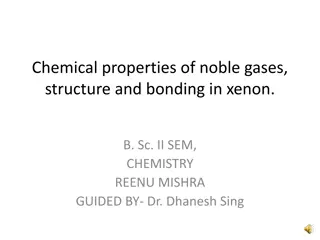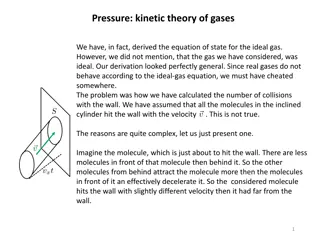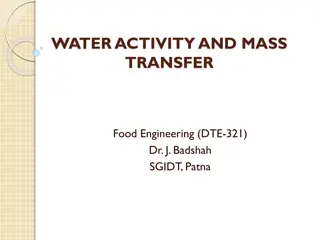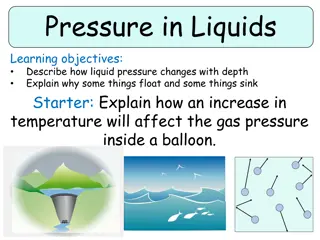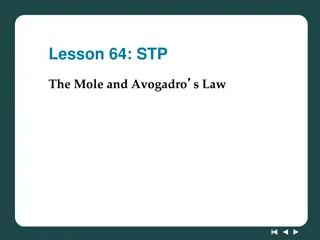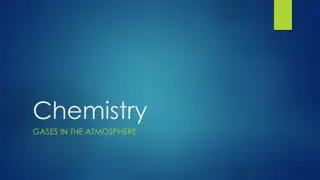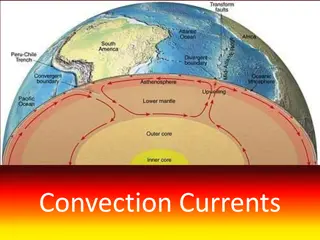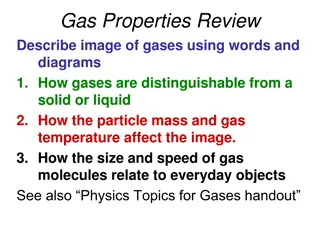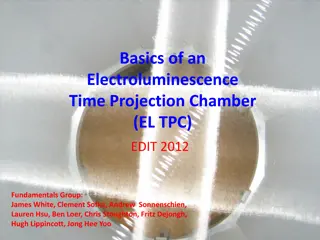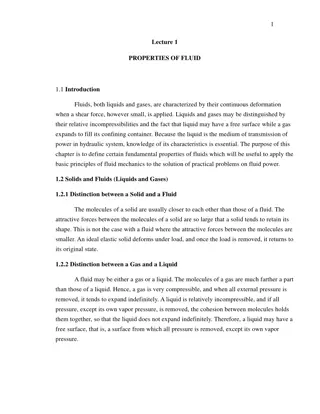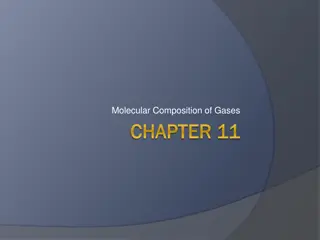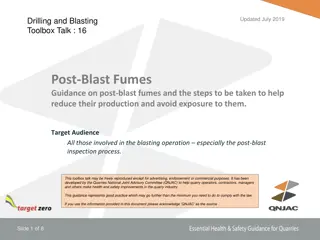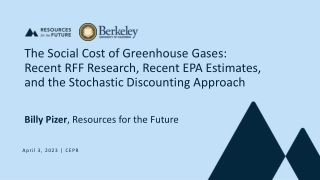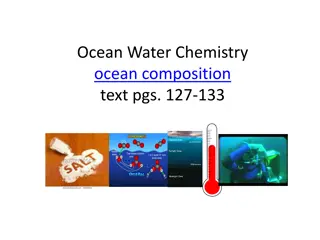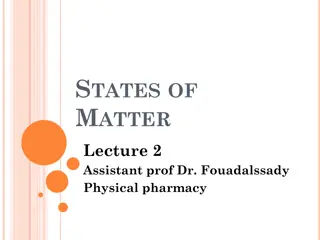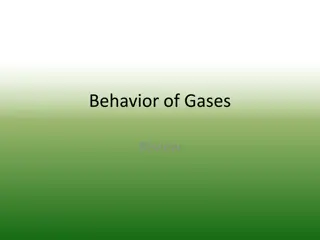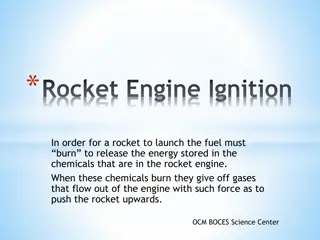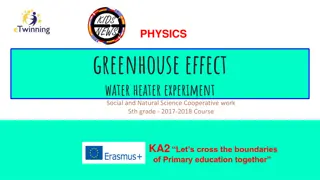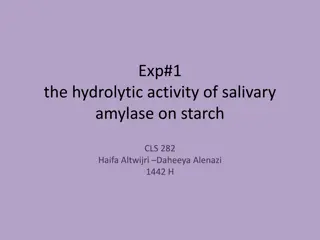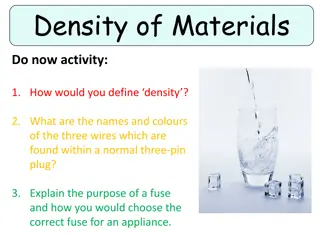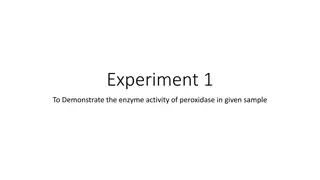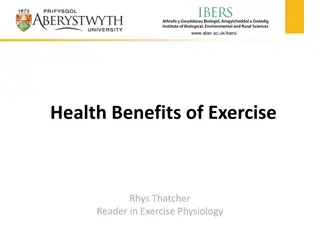Understanding Activity and Fugacity in Gases
Fugacity of real gases can be measured, defining standard states in terms of fugacity. The relation between fugacity, activity, and molar concentration is explored, highlighting the ideal behavior of gases at standard states. Activity coefficients and deviations from ideal gas behavior are also discussed in detail.
Download Presentation

Please find below an Image/Link to download the presentation.
The content on the website is provided AS IS for your information and personal use only. It may not be sold, licensed, or shared on other websites without obtaining consent from the author. Download presentation by click this link. If you encounter any issues during the download, it is possible that the publisher has removed the file from their server.
E N D
Presentation Transcript
Activity Standard states
Gases Fugacity of real gases can be measured So standard states fixed in terms of fugacity At any fixed temperature, standard state can be defined as one in which the gas has a fugacity of 1 atm Therefore a= f/fo=f since fo= 1 atm ie activity and fugacity are same figure
From figure Can be seen that standard state is a hypothetical state , at 1 atm pressure the gas behaves ideally, so that f=p and equal to unity Activity of an ideal gas is numerically equal to its pressure since f=p For gases activity thus has the same meaning of fugacity, since standard state for both of them are same.
Like fj/pj, aj/pjis called activity coefficient(p), which is a measure of deviation of the real gas from ideal behaviour. Therefore j= jo+ RTln ppj Instead of choosing the ideal gas at 1 atm as a standard state, unit molar concentration (c) can be chosen as the standard state (1)
Therefore j= (jo)c+ RTln(aj)c (2) For an ideal gas ac= c We know that j= jo+ RTln pj(3) Since pj= cjRT j= jo+ RTln RT + RT lncj(4) For component j which behaves ideally ,its molar concentration cjis cj= (aj)c therefore
j= jo+ RTln RT + RT ln(aj)c(5) j- jo= RTln fj = RTln(aj)p = RTlnRT + RTln (aj)c = RTln (aj)cRT From (7) & (6) (aj)c= (aj)p/RT = fi/RT (8) (6) (7)
This equation gives the relation between fugacity and activity The activity coefficient in terms of concentration ( c) is c= ac/c = f/RTc Here p = f/p Since p cRT for non ideal gases c p (9)
But as pressure is lowered ,gases behave ideally , so c p For an ideal gas c = peven though ac ap Difference in acand aparises from the difference in the choice of standard sate. Not usual to activity in terms of concentration for gases since activity in terms of pressure is same as fugacity Fugacity is used only for gases
In solution For pure liquids and solids, standard states are taken to be the pure condensed phase at a total pressure of 1 atm Thus activity at 1 atm is taken as one But cannot be true for solutions containing liquid or solid Activities of solute and solvents has to be considered separately. on increasing the dilution , a solvent in solution approaches ideal behaviour given by Raoult s law Solute approaches ideal behaviour specified by Henry s law
Solvent Standard state is chosen that the pure liquid solvent at the given temperature and at a total pressure of 1 atm, has unit activity Letf1.be fugacity of pure solvent Pure solvents under these conditions is the standard state so f1.= f1o On adding solute, if fugacity of solvent becomes f1, f1<f1o
Therefore activity in this case is a1= f1/f1o For an ideal solution f1= f1oX1= f1.X1 So a1= f1oX1/f1o= X1ie a1= X1 ie activity of solvent in an ideal solution at 1 atm is equal to its mole fraction
For real solution, Raoult s law not obeyed So a1/X1differs from unity Activity coefficient( X) is a measure of the extent of deviation When X> 1 (a1>X1) - system shows positive deviation When X<1 - negative deviation
Activity coefficient of j , j=aj/Xjis called rational activity coefficient of j
Solutes Several different standard states are chosen depending circumstances. If solute and solvent are completely miscible in all proportions, The standard state of the solute is chosen as the pure liquid at atmospheric pressure This is the same standard state as for the solvent
Activity coefficient a2/X2approaches one as X1 tends to one If the solute has a limited solubility, different standard states chosen based on the concentration unit used to express the composition of the solution If choice is mole fraction - it is referred to as rational system If molality/molarity - practical system
Rational system If mole fraction of solute is X2 Henry s law is applicable to solute , f2=kX2 So standard state for solute is chosen in such a way that in a dilute solution the activity becomes equal to mole fraction of the solute Thus a2/X2tends to one as X2tends to zero (1) Figure
For very dilute solution as X2tends to zero actual cure merges with Henry s law line Since a2= f2/f2o(2) So (1) can be written as Lim X2 0 a2/X2= Lim X2 0 f2/f2oX2= 1 (3)
Since Henrys law is also applicable to solute In very dilute solution Lim X2 0 f2/X2for solid line = limiting slope = k For Henry s line (dotted) X2 0 Lim X2 0 f21/X2= k (4) Therefore Lim X2 0 f2/X2= Lim X2 0 f21/X2= k (5) Since f21= kX2(5) becomes Lim X2 0 f2/kX2=1 (6)
If (3) & (6)should hold good simultaneously f2o= k Form figure , this state can be found by extrapolating the dotted line to a concentration X2=1 From Henry s law f21= k X2, when X2= 1, f21= k This fugacity is the standard fugacity for the solute Standard fugacity f2ois a hypothetical quantity and is not equal to the fugacity f2.of the pure solute.
Standard state for the solute is chosen as the hypothetical liquid solution at the given temperature and 1 atm total pressure mole fraction of solute is unity and behaves ideally obeying Henry s law If this law is obeyed over entire range of composition X2= 0 to 1 Then a2= f2/f2o= f2/k =kX2/k =X2 (7)
Thus as X2 1 a2becomes unity and the activity at any other concentration will be equal to X2 The activity of the pure solute a2. is different from a2o For any mole fraction Xj, Xis aj/Xj For a solution behaving ideally over the whole range of concentration the activity will be equal to its mole fraction
For non ideal solution the standard state has no reality and it is preferable define the standard state in terms of reference state. The activity coefficient becomes equal to unity as X2 0 Thus possible to choose the infinitely dilute solution as the reference state, Such that as X2 0, X 1 or a2 X2
Practical system Molality is widely used to express concentration than mole fraction In very dilute solution molality is proportional to mole fraction Henry s law is valid under these conditions ie f2= km2 If f2is plotted vs m2, k can be obtained from the limiting slope of the curve figure
The choice of standard fugacity should be as m2 0 , a2/m2 1 or Lim m2 0 a2/m2= Lim m2 0 f2/f2om2= 1 Under such limiting conditions, Henry s law is valid ie Lim m2 0 f2/f2om2= 0
The standard state of the solute is the state, which at the fugacity that the solute of unit molality would have , Henry s law is obeyed at this concentration With increasing dilution solute approaches ideal behaviour
A similar cure can be obtained by plotting a2 vs m2 Since the mole fraction scale has limits of 0 to 1 choice of X2=1 as standard state is quite natural Theoretically molality has no upper limit, but in practice the upper limit is the solubility of the substance
The choice of standard state m2o=1 mole/kg is arbitrary The standard state is the hypothetical 1 molal solution obtained by extrapolating Henry s law line to m2= 1 If the concentration of solute is expressed in molarity(c) the standard state is chosen as the hypothetical state obtained when Henry s law plot is extrapolated to c2= 1 mol/L
Solids The activity of pure liquid or pure solid solvent , at atmospheric pressure, is taken as unity at each temperature The corresponding reference state in the pure liquid or solid at 1 atm. Pressure, the activity coefficient is equal to unity. With increasing dilution of the solution the mole fraction of solute tends to zero and that of the solvent to unity.
By the equation ai=fi/f1o, the activity of the solvent is equivalent to f1/f1o Therefore from fi= Nifio, for ideal solution the activity of the solvent should always be equal to its mole fraction at 1 atm pressure. For non-ideal solution- the deviation of ai/Ni from unity at 1 atm.
Pressure may be taken as a measure of the departure from ideal behaviour. Since activities of liquids are not greatly affected by pressure , this conclusion is generally applicable provided pressure is not too high.


